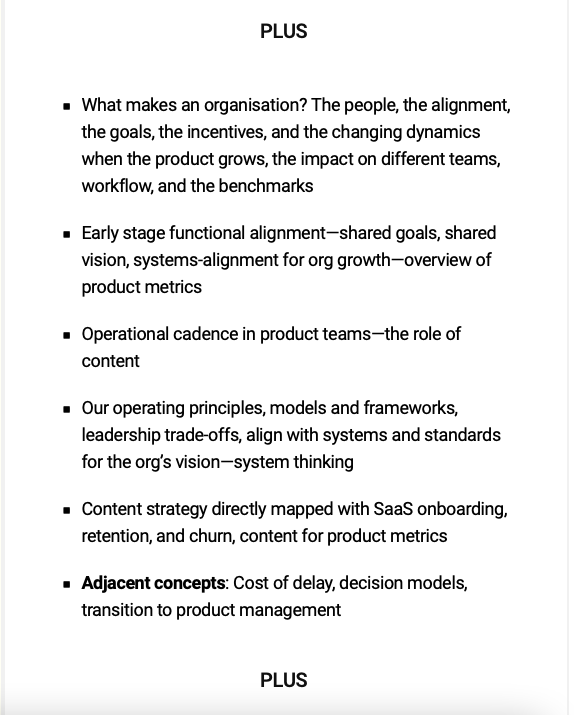After I announced my two courses in content strategy and content design, I received different types questions by some people. I answered some of these in part 1 of this post, and now I am sharing a few thoughts on that might be useful for some of you while growing into the leadership roles.
Cost of Delay—Our work
In product management, Cost of Delay is the revenue opportunity lost if they delay the product’s launch. in more broad terms, Joshua Arnold defined the Cost of Delay as a way to communicate the impact of time on the outcomes we hope to achieve.
One way to think about it is to consider the project, product or feature you are working on and ask this question—What would it be worth to us if we had it right now? In the situations where there is already a nominal delivery date, you might ask:
- What would it be worth to us if we could get this a month earlier?
- What would it cost us if it was a month late?
There are always some trade-offs in the Cost of Delay decisions—either at the strategy level or at the system level. Cost of Delay is generally associated with the ‘value’, the short-term gains and its impact on the long-term goals. This is why leadership is so much about weighing the trade-offs.
Cost of Delay—Our learnings
Imagine if we apply this Cost of Delay knowledge to how we learn and invest in our skills, fulfilment, career path, and life goals. Some of us do not take the learning opportunities seriously enough. This is because we will rather be wrong than be uncertain and being open to learn often shows us as being uncertain.
If we are sure about something, we might not be keen to widen our perspective to see if there are gaps, issues, or more opportunities to do something better or differently. This principle is foundational to my course in product content strategy, content design, and system thinking for content—Meaning.
I don't know why but I don't like working with super-confident people.
— Vinish Garg 🎗 (@vingar) March 7, 2022
Meaning is not a course that talks only about the role of content or design in the product. It is also not only about the product metrics or organization goals.
Meaning is more about how you see your work and its role what you are and what you can be or you want to be. If we apply the Cost of Delay in how we identify our core capabilities, our career path discussions might look a lot different.

Imagine talk about all these topics on top of our primary work in content design, UX writing, UX design, product content strategy, product marketing, product positioning, and all things products. It is really exciting.
Meaning is not only learning, it is capacity building. If you have any questions about the course and you do not write to me to ask, you know the cost of delay.
